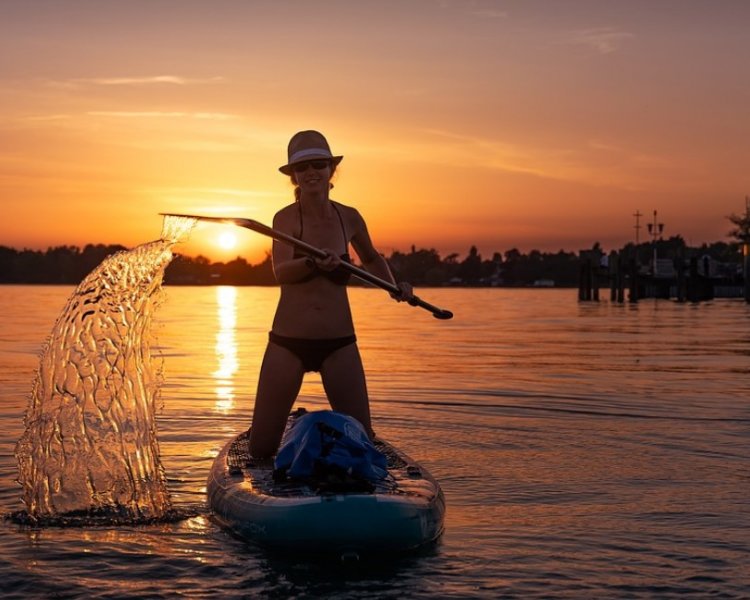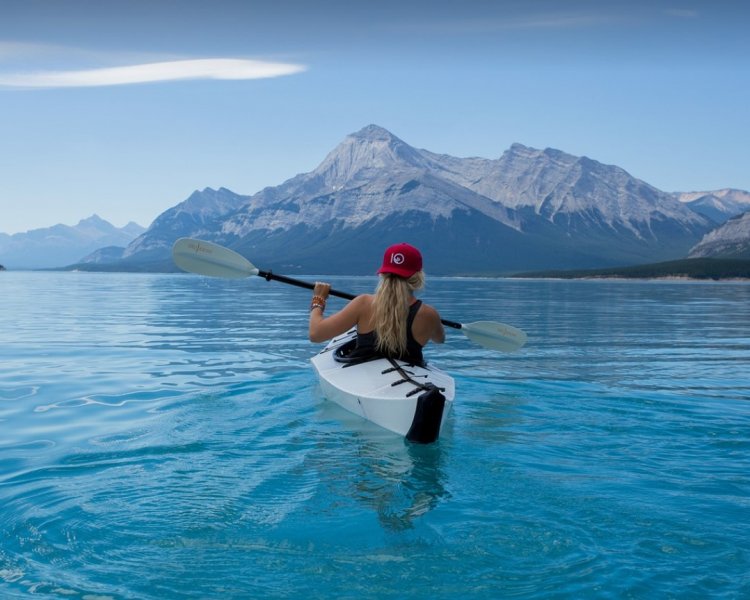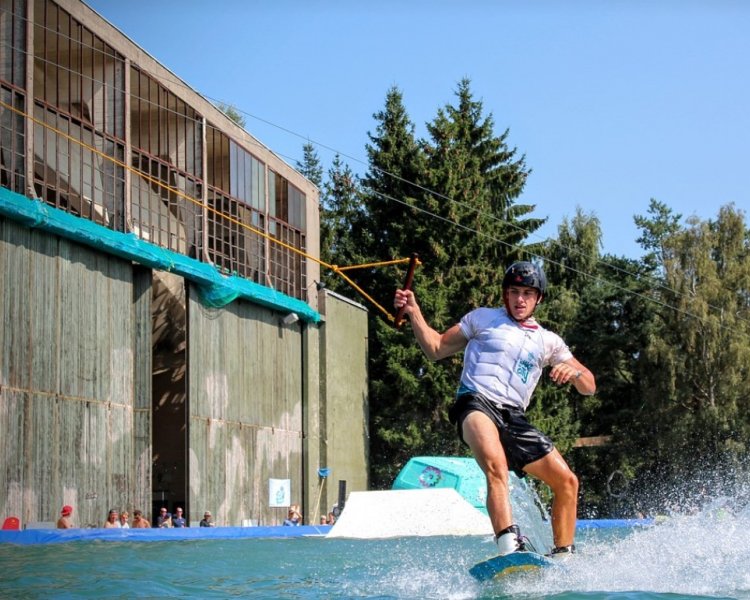Stand Up Paddle Boarding Difficult? » (My Quick & Easy Guide)

As a beginner in watersport, it can be quite difficult to tackle how to handle the process of boarding in general
In this article, I will give you an answer to the difficulties of paddleboarding, and help you find out if its a good hobby you can pick up.
Is Stand Up Paddle Boarding Difficult? Stand up paddleboarding is very easy to learn compared to other watersport variants. The balance required is very small since SUP is mostly performed in more quieter waters with minimum waves. SUP boards can fit any type of person whether you are small or large, there is a SUP board for you.
Continue reading as I dive into the difficulty of SUP boarding and how to start off as a beginner.
So, How Difficult Is Stand Up Paddle Boarding?
SUP boarding is generally considered the easiest boarding experience you can take on as a hobby. The balance required as well as the strength and overall conditions are milder than other boarding variants.
SUP boarding is a great workout that actually can benefit your entire body, and will strengthen your balance and endurance.
Beginner SUP Boarding Tips
Before we get into the actual process of SUP boarding, here are some things to keep in mind on your SUP board adventures:
- Speed and momentum. Just like riding a bike or roller-skating, having speed and momentum will help you balance on your SUP board easier. It may be a bit scary in the beginning, but once you learn the standard balance of SUP boarding, try to aim for higher speeds, this can save you some energy on keeping yourself on the board and give more room to enjoy boarding.
- Right posture. SUP boarding is all about the technique, and most importantly maintaining the right posture and stance on your board. Having effective posture can make it easier to balance, and save energy by paddling correctly, giving you a better experience and make you able to paddle for longer periods of time.
- Don’t stand too far forward or look down. As you probably picked up by now, balance is important when SUP boarding. Don’t get distracted and look the side of lean forward, this can easily make you lose your balance and fall off your board, and trust me, as a beginner, falling off your board isn’t fun since it can take a while to get back on it.
- Focus points. To make it easier to keep balance, instructors or experts will often tell you to focus on a specific area in the distance and keep your eyes locked on it. This will help you abstain from being distracted and help you stay on your board.
- Learn to rotate. Turning and rotating your board is important to know. To do this you want to submerge your paddle in the water and push back. Doing this rotates your board, make sure you have a strong footing before doing so, as it can quite easily throw you off balance.
Easy Guide to SUP Boarding
So you now know that SUP boarding is very easy, but you might still wonder how you get on that damn thing and start paddling away.
Here is an easy and quick step by step guide to kick off your SUP boarding adventure:
- Make sure to have the right-sized SUP board and paddle. Depending on your height and weight and general experience, the SUP board best suited for you may vary. The same thing goes for your paddle. There are different factors that come into play when adjusting your paddle. If you have a more experienced instructor or friend you can ask for advice as to how to correctly adjust your paddle to fit your height. A general rule of thumb is that your paddle length should be 3-4 inches above your head when the paddle is resting on the ground
Wondering if you can use your surfboard? Get all the details here, where we address this question.
- Keep those fins clean. When you put your SUP into the water, make an extra check to make sure your fins aren't filled with any seaweed, sand or other substances that can adjust your fins in the wrong way.
- Kick-off. Place yourself on your SUP by resting one knee on the SUP and keep the other foot in the water. Push yourself off from the shore or wherever you are situated, and into open water.
- Get comfortable. Stand on your knees on your board and find a good balance in this position before continuing.
- Stand up. Once you are comfortable and have found your balance in your kneeling position, you can try to stand up slowly. Do it at your own pace, and find a good standing balance.
- Paddling. Once you have practiced standing up, it is time to pick up your paddle. Go back to a kneeling position, and the next time you stand up, take your paddle with you which you should place in front of you on your board. Practice this for as long as you need until it becomes muscle memory.
- SUP board away! You now know the basics of starting your paddling adventure, paddle away, and get used to falling off every now and then, learning the right balance takes time, but you’ll get there!
You now know the basics to SUP boarding in theory, now is the time to try it for yourself!
Depending on where you live there are probably courses available for SUP boarding, it can be done in any water and is getting more and more popular due to its easy difficulty.
Fun Facts About SUP Boarding
Here are som fun and interesting facts about SUP boarding you might not know:
- Long History. The act of paddling yourself on a floating object or board has been carried up through history. Some experts suggest that even the ancient Mayans used the technique when traversing up rivers and streams, making it probably the oldest boarding technique to date.
- Variety. SUP boarding can be done in various ways. Some people use SUP boards similar to traditional surfboards, where the ride the waves of the ocean. Most SUP boarding happens in more calmer waters tho, usually on the shores of beaches or in rivers and lakes. Some people also use SUP boards for fishing to spice up their fishing hobbies. Other varieties include SUP yoga, SUP racing, and SUP fitness. All in all, SUP is a great way to get exercise and can be mixed with other hobbies.
- Modern SUP Boarding Started in The 40s. The SUP boarding we know today started off in the surf capital of the world, Hawaii. The boards were made to give instructers a closer and better view of the waves and the surfers. This way of Boarding became increasingly popular, as it was a lot more beginner-friendly and safe than traditional surfing.
- SUP Boarding Has Been Done in a Hurricane. Going out for a SUP board session in a hurricane isn’t exactly something I’d suggest, but nevertheless, Laird Hamilton took his board out into Hurricane Marie in 2014 and rode the enormous waves.
- SUP Surfing is Likely to Become an Olympic Sport. Normal surfing is making its debut in the 2020 Summer Olympics and can be the starting point of integrating other surfing variants in future Olympics. If it is a success it is very likely that sports like SUP racing can be adapted into the Olympics.
...



